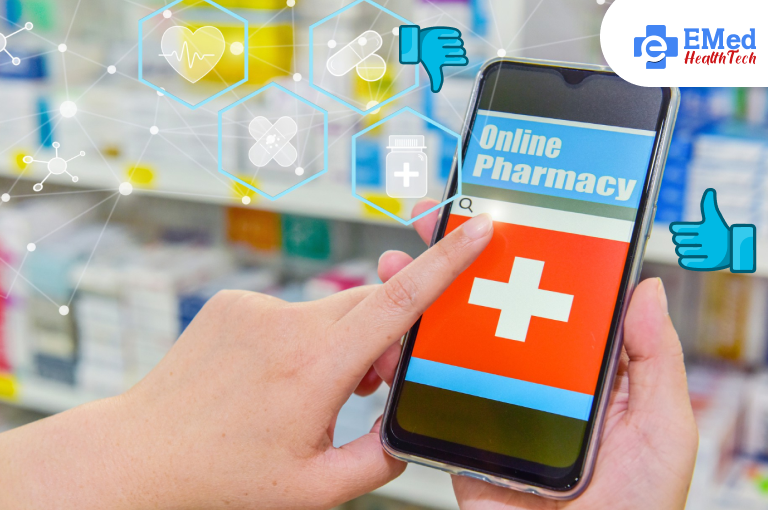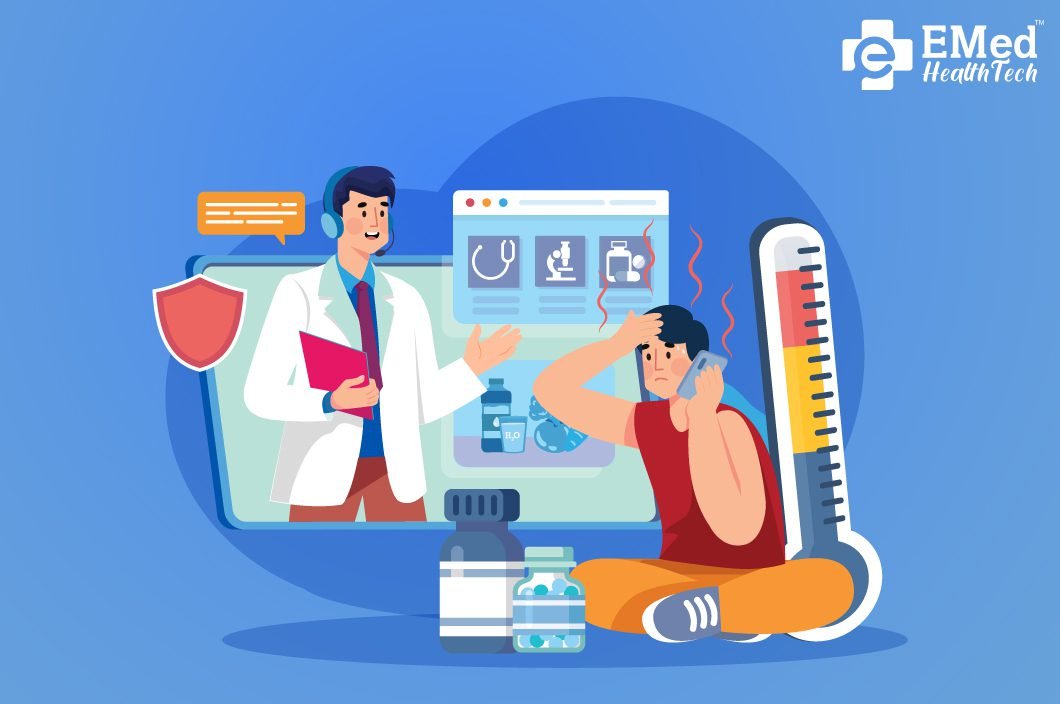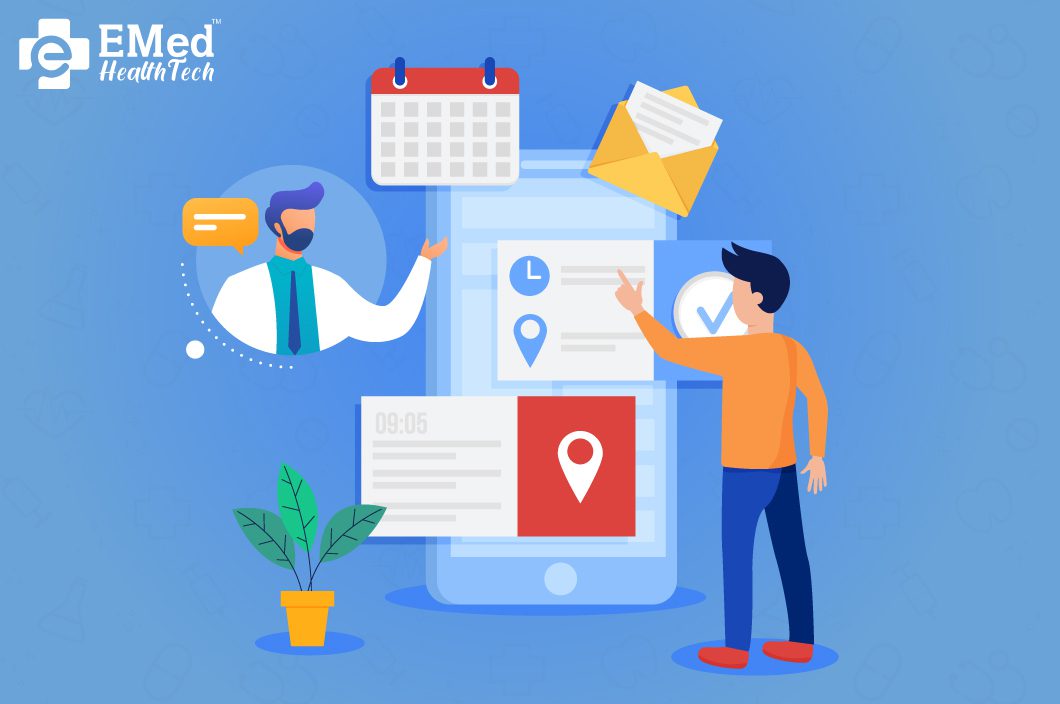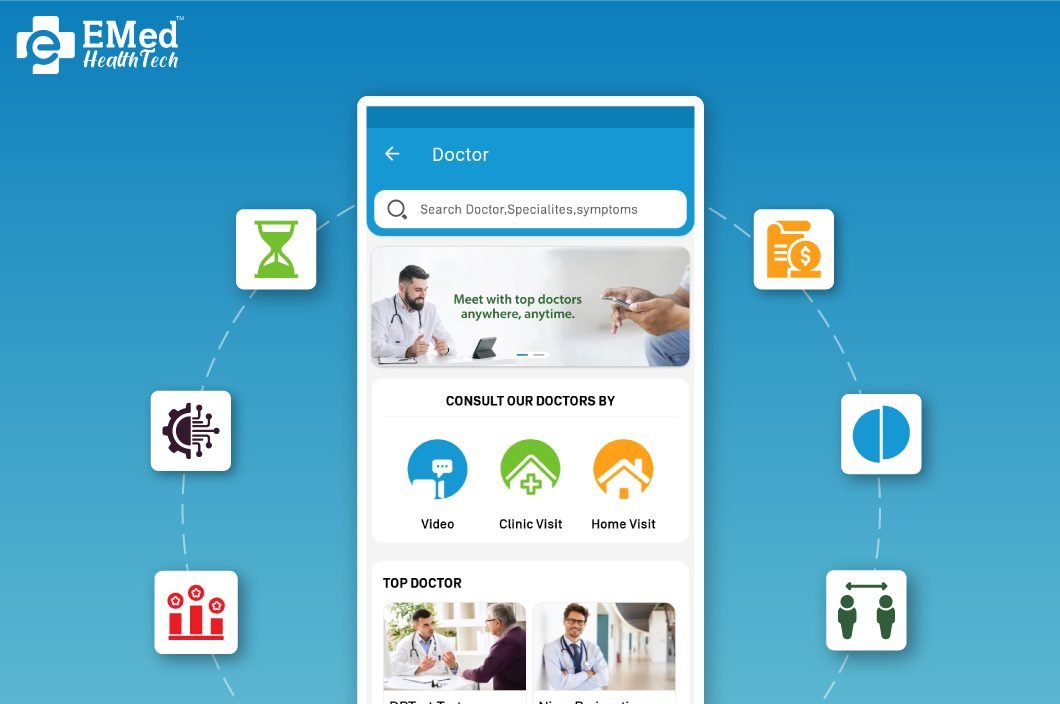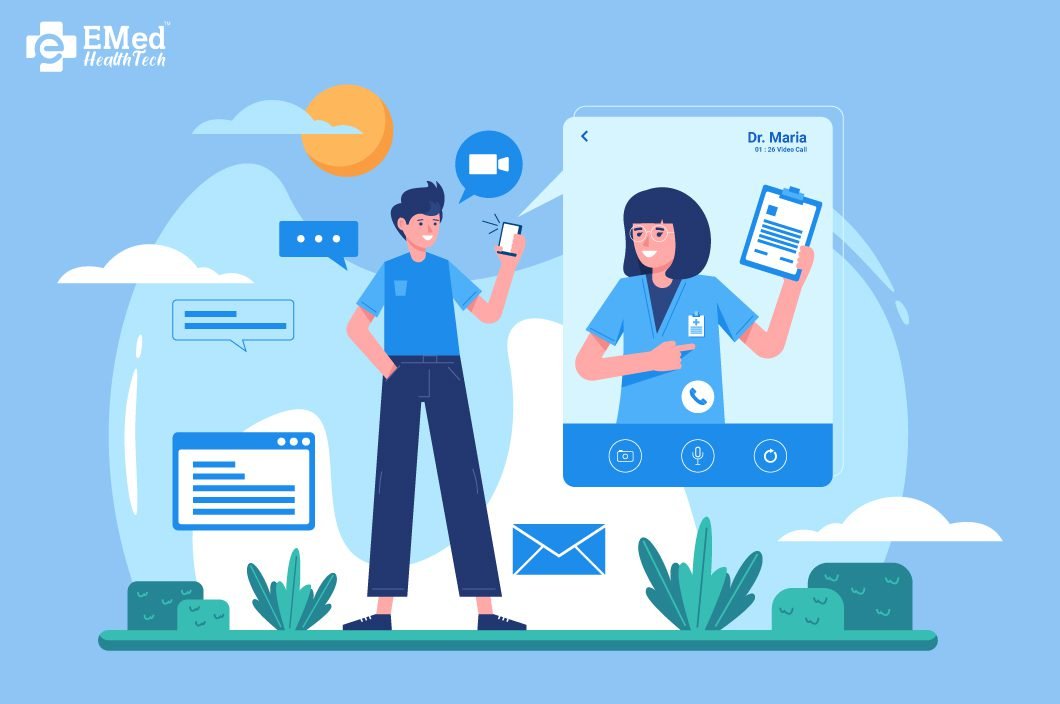As more and more people use online pharmacies, medical treatment and the way people find medication have undergone a huge sea change. With convenience becoming the pillar of modern living, ePharmacy services and online pharmacy application development are gaining ground at a gallop. However, just like any other digital service, trusts and disadvantages hold sway over customer experience and satisfaction.
In this blog, we go through what customers find praiseworthy about online pharmacy platforms and the worries that remain. Whether you’re a healthcare entrepreneur, tech innovator, or familiar old pharmacist shifting into the digital age, grasping customer sentiment is crucial for a successful experience when using an online pharmacy application development.
What Customers Like About Online Pharmacies?

-
Unmatched Convenience
Online pharmacies can obtain drugs at the push of a button. No longer do you have to stand in long queues or fight your way through traffic to the physical pharmacy. Customers can simply log onto an online pharmacy app, upload their prescription, and then wait for their medicine to be delivered right to their front door–sometimes even on the same day. For patients who have chronic diseases and need regular medication, this makes a big difference. Elderly users and carers also benefit greatly from this.
-
24/7 Accessibility
Unlike conventional pharmacies, ePharmacy platforms never close. This is especially good for people with tight schedules or mobility problems, for anyone living far from healthcare facilities. Being able to place orders at midnight or on a festival gives peace of mind to users who need immediate support on non–life–threatening but urgent health questions.
-
Discreet Purchases
Online pharmacies offer a level of privacy that physical stores don’t always afford. When they buy medicine for potentially embarrassing problems such as mental health or sexual health, or chronic conditions which compromise their dignity, many customers enjoy using the more discreet online pharmacy. Plus, with a security pharmacy app, you have greater peace of mind in transactions; and you won’t have to see your GP about contraception or the condition of your bowels.
-
Detailed Product Information
The majority of online pharmacy platforms have comprehensive product descriptions such as dosage, usage instructions, side effects, and reviews. With this information, consumers can make decisions based on the facts, a great boon to all those who are managing multiple medicines. Patients can also compare generic alternatives, check for drug interactions with other drugs, and have access to educational materials that are not available from their local pharmacist.
-
Price Comparison & Discounts
One huge advantage for customers of ePharmacy platforms is that they can compare different brands and products. Many online pharmacies also provide unique offers, coupons, and subscription reductions — this function is rare in traditional brick-and-mortar stores. Some pharmacy apps even have a loyalty program or cash back incentives that boost customer retention and satisfaction.
-
Automated Refills & Reminders
A smart online pharmacy app will include features like refill reminders, medication planning, and automatic reordering. Such functionality can help users to keep a consistent routine with their medication, which is particularly beneficial for chronic conditions. When supplements are issued on time and there’s an auto-refill option, the odds of missing doses are greatly reduced. All of this ultimately augments patient response rates and quality of life.
-
Better Access to Specialised Products
Not all medications are available in local pharmacies, particularly those made by lesser-known brands or niche products. Therefore, consumers frequently turn to larger-scale ePharmacy platforms to find the products they need. This may include specialised drugs, nutritional supplements, or wellness items that are not available on-site at home. Through this expanded selection range for both prescription drugs and supplements, patients are ensured that they will receive the right treatment without any compromises whatsoever. This is why online pharmacy application development is blooming in this digital age.
-
Streamlined Customer Support
The development of modern pharmacy apps features integrated chatbots and customer service systems that allow users to get advice from pharmacists or healthcare professionals within the app itself. This direct line of communication enhances customer trust and experience. In-app support, FAQS, and 24/7 help—all serve to answer customer questions quickly and well, and wind up meaning callbacks with an increased sense of satisfaction.
What Customers Dislike About Online Pharmacies?

-
Delayed Deliveries
One of the greatest pains of all for users is late or missed deliveries. Although most on-line pharmacy apps aim to ship quickly, logistical problems can screw things up–especially when the medicine comes weird. Any delay in supplying essential medication ends up turning into a game of cat and mouse. When patients miss doses, their health gets worse, and trust in the platform evaporates like moisture under a sunbeam, which can be mitigated with online pharmacy application development.
-
Concerns About Authenticity
This has meant some apprehension for users in buying online pharmaceuticals. People expect a particular guarantee that the medicines they get are not fakes, have been kept well, and are approved by the appropriate health authorities. The only way to gain users is through building trust in verified suppliers, certification operations, and a clear set of quality control standards. Efforts here are essential in landing users in the first place and keeping them.
-
Complicated Interfaces
Some pharmacy applications are too complex–this is bad UI/UX design that makes it hard for older users or those without much experience in tech to even negotiate the buying process. A cluttered interface or lack of logical navigation may result in frustration and uncompleted purchases. Users expect fully integrated registration, simple prescription uploads, and a pleasant, easy shopping experience.
-
Lack of Immediate Consultation
Although online platforms are improving their ability to recommend doctors’ apps, the immediacy of advice in person from a pharmacist is beyond them. For matters of urgent concern or complex prescriptions, users might want to talk face-to-face–this is a major deterrent to new arrivals who need expert guidance on understanding drug interactions or side effects.
-
Limited Payment Options
Different online drugstores don’t support all payment methods. The lack of options such as UPI, digital wallets, and COD (cash on delivery) may make it hard for some groups of customers to buy medicines through their system. Thus, if a pharmacy app is to maximise reach and user convenience, it should offer multiple payment gateways with seamless checkout functions.
-
Data Privacy Concerns
With the introduction and use of mobile devices that store an individual’s health records, customers are naturally concerned about what methods apps use to protect this information from theft or snooping. After all, nobody wants to risk sensitive medical information being leaked onto the internet-especially when you’re managing chronic disease daily!
-
Inadequate Customer Support
Sometimes customers may feel overlooked when there is no real-time customer support or the team does not reply quickly. Especially for orders that have gone wrong or which need to be corrected urgently. If a reliable service is available to help keep these things under control, they are essential, and an app should allow for wrong medications, refund requests, or prescription checks.
-
Prescription Upload Hassles
Though most platforms make it easy to upload prescriptions, sometimes these systems are erratic or require manual approval. This causes a delay that customers can not tolerate. A seamless system for managing prescriptions is critical to a smooth ordering process, particularly for your elderly or chronically ill users.
Key Takeaways for App Developers and ePharmacy Startups
Also, these professional conclusions can greatly inform the businesses that are currently developing online pharmacy apps. What can and can not work is to help the research process of features, design of interfaces, and backend procedures. Below are several functions that a customer-centric pharmacy app must provide:
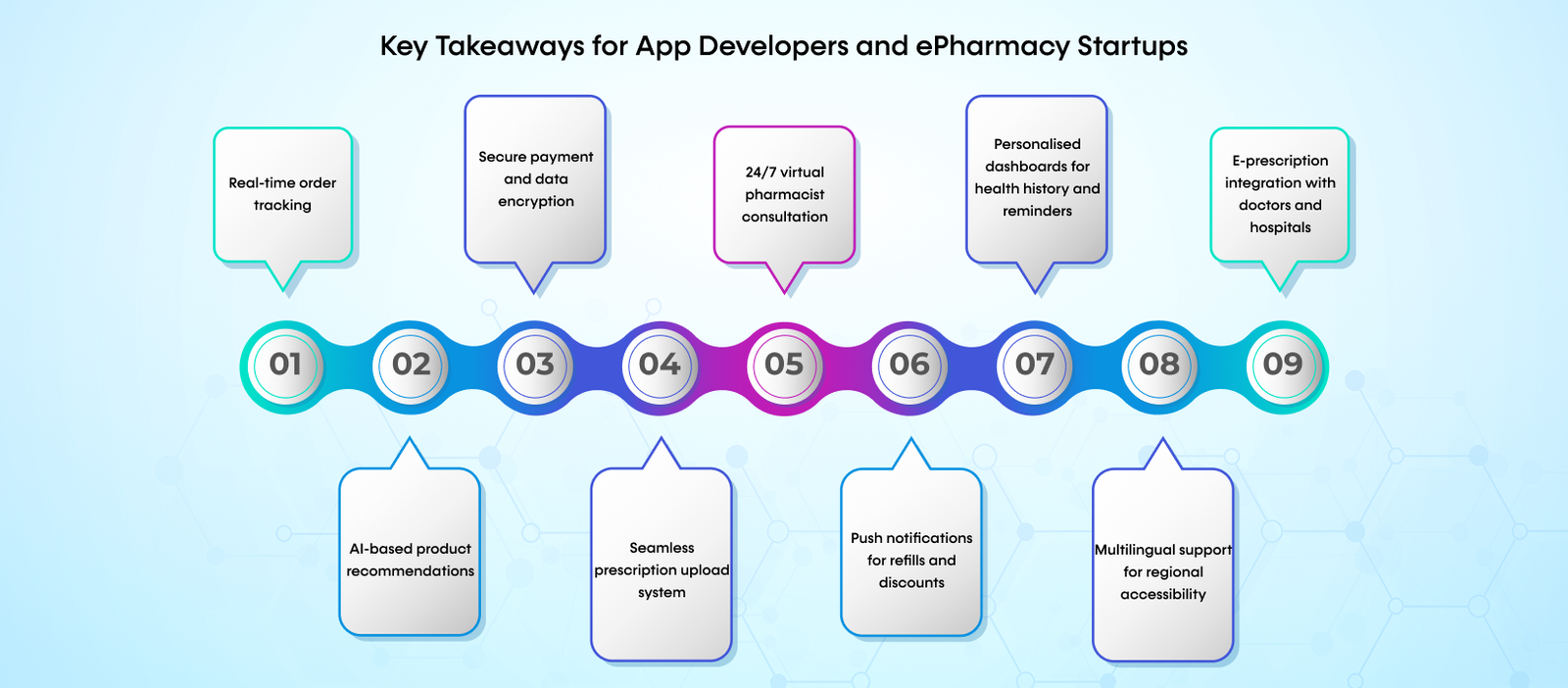
- Real-time order tracking
- AI-based product recommendations
- Secure payment and data encryption
- Seamless prescription upload system
- 24/7 virtual pharmacist consultation
- Push notifications for refills and discounts
- Personalised dashboards for health history and reminders
- Multilingual support for regional accessibility
- E-prescription integration with doctors and hospitals
A successful strategy for building pharmacy applications must combine technical excellence with empathy for the user. This means predicting your customers’ pain points while always giving them a consistently attractive, engaging, and safe user experience. The app’s ongoing status depends on this, as does any hope of success.
The Future of Online Pharmacies
With the development of the internet and integration of telemedicine platforms, the future of ePharmacy platforms is bright. Thanks to technologies like AI, blockchain, and machine learning, pharmacy app development will grow even more personal, secure and efficient soon. Features such as medicine image recognition, smart health monitoring and personalised notifications will mean better interface design for software.
Trust and compliance will be the key issues in attracting and holding customers, as ePharmacy platforms come under more stringent scrutiny by governments. Learning to keep tapped into these trends will give developers an edge in the increasingly competitive market. International projects in app development should pay particular attention to HIPAA, GDPR, and the regulations of local health authorities anywhere they operate.
Moreover, the integration of ePharmacies with broader health tech ecosystems — such as diagnostic labs, teleconsultation platforms, and insurance providers — is set to redefine digital healthcare delivery.
Conclusion
Customers are taken with the convenience and accessibility of online pharmacies, but in the end, what they depend on for satisfaction is app performance that is always available, safe, and reliable, and an online pharmacy service they can trust. Get started, bring in high-quality, user-focused applications to market today, and thrive in this evolving era.
To truly make a mark, it’s important to choose a tech partner with proven experience in building healthcare-specific platforms that are scalable, user-centric, and compliant.
Build Your Online Pharmacy With EMed HealthTech
Aimed at pharmaceutical distributors or suppliers, EMed excels in crafting online pharmacy app development to create an enterprise plan and business growth goals to set around it. Whether it is an intuitive UI/UX design or a HIPAA-compliant back-end system, we enable you to churn out safe, scalable, and full-featured pharmacy software that your end-users will love.
Let’s revolutionise healthcare together with online pharmacy application development! Why not contact EMed today and get a head start?
